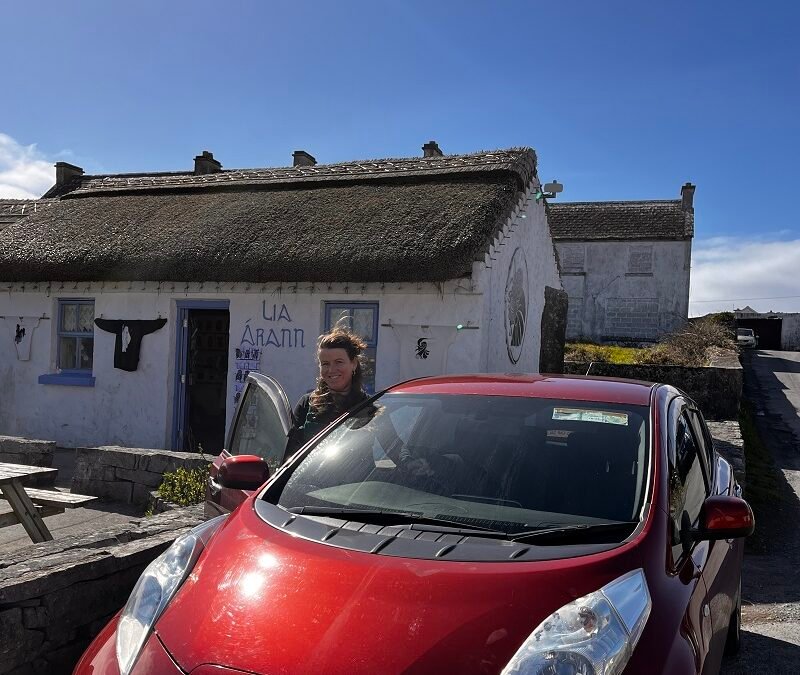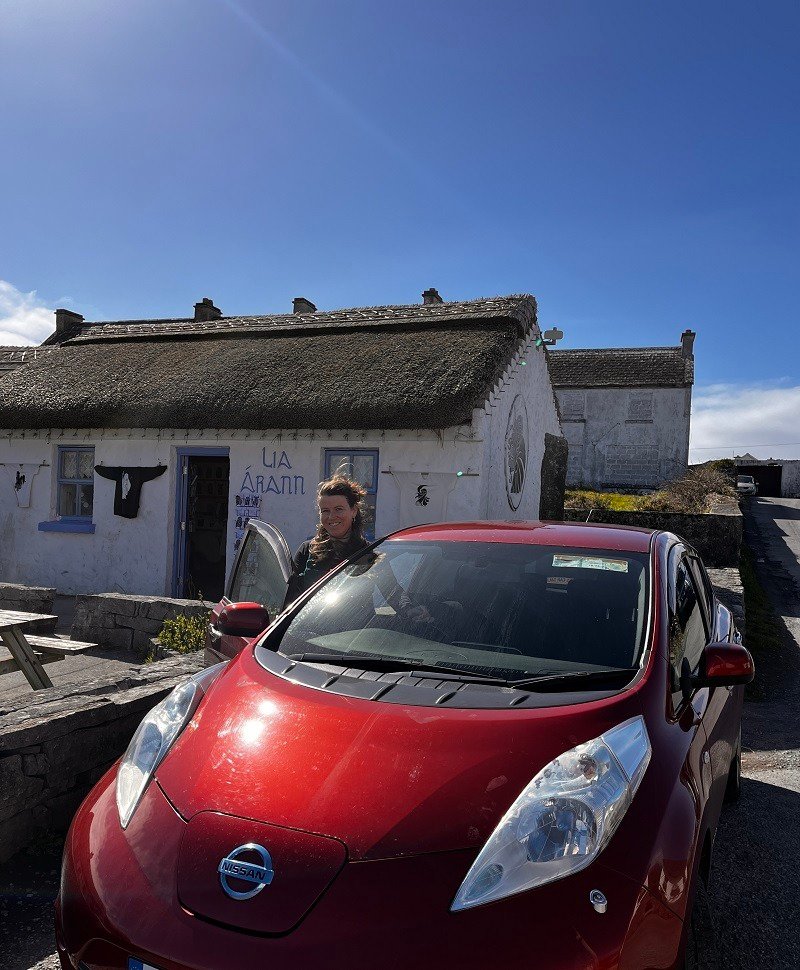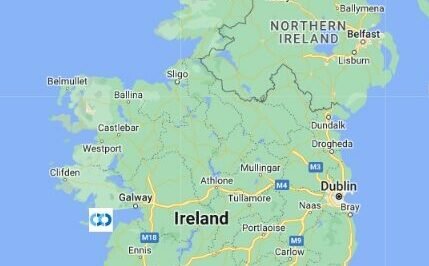Success
Thanks for telling us your story!
We’ll contact you before publishing it to make sure your happy with it
Our Latest Community Story

EV: It has been a very easy journey for me.
“I live on an island in a beautiful part of Ireland…it seemed the logical choice to drive an EV.”

Location
Árainn, Co Galway
Name
Niamh
Useful Links
https://www.seai.ie/technologies/electric-vehicles/buying-an-ev/buying-a-used-ev/
Will a second hand fossil fuel car be lower in carbon footprint than a new EV?
Impact:
1500 kg CO2 avoided per year, the equivalent CO2 offset by 66 trees mature conifers. It’s also the Carbon intensity of 4 passenger return trips Shannon-London Gatwick.
My personal sustainability action was
I live on an island in a beautiful part of Ireland, and with such small distances to cover, not to mention the carbon footprint from importation of fuel for ICT’s, it seemed the logical choice to drive an EV.
What were your first steps?
I browsed the internet to find an affordable used EV and bought a used Nissan Leaf from a dealer. It was a Japanese import and is in immaculate condition.
How long before you thought ” Yes” this will work
It really worked from the very beginning. Not needing to fill up at the fuel pumps and knowing I could plug the car in at home every night takes a weight off the mind and leaves it in my wallet. Once I realised I could make five 16km round trips to the main village, it was easy to ensure I plugged in when necessary.
Was the journey easier or harder than you expected?
It has been a very easy journey for me. I have had the car now for 3 years and it has given no trouble. There is no engine so I don’t need to keep an eye on oil/water levels, or worry about the battery going dead. The heated seats and steering wheel, along with instant heat from the radiator, makes a huge difference in winter; I don’t have to wait for the engine to warm up as there is no engine. It is such a smooth car to drive, and there are no fumes from the non-existent exhaust pipe.
Have you any plans to go further?
I will be looking into purchasing an EV for the mainland too and replacing my ICT there. Once the network of charging points increases, I will be first in line. In the interim, I think a hybrid will be a good choice.
Charging your EV at night on a green tarrif is very sustainable
The typical travel from Niamh’s home to the main village on the island is 8km. Allowing for two return trips per day which would be common enough that’s 32km/d, six days per week which would be 9,984 per year.
If the car is charged at night on a green tariff we can assume zero emissions. This is what Niamh does.
A similar diesel consumes 5.6L/100km which would equate to 559 litres/yr. @ 2.683kg CO2/L this is 1,500 kg CO2 avoided per year.
That is the equivalent CO2 offset by 107 trees mature conifers. It’s also the Carbon intensity of 4 return trips Shannon-London Gatwick.
More information: What if non-green electricity was used to power the EV?
A Nissan Leaf 2012 consumes 17kWh/100km. Niamh’s driving would require 1697kWh of electricity. If this was not provided by green electricity and instead was provided by electricity with the carbon intensity of grid electricity (333g/kWh) the EV energy demand would produce 565kg of CO2 – this is still only one third the amount produced by a diesel equivalent.
Notes
[1] ‘Nissan Note 2010 MPV Manual 1.5 emissions and real world mpg’ https://www.fleetnews.co.uk/emissions-data/nissan-note-2010-mpv-manual-1461/125/
[2] CO2 per air passenger trip vary very widely from the sources. Here we used https://co2.myclimate.org/en/flight_calculators/new
[3] A Nissan Leaf 2012 consumes 17kWh/100km https://ev-database.org/car/1011/Nissan-Leaf


